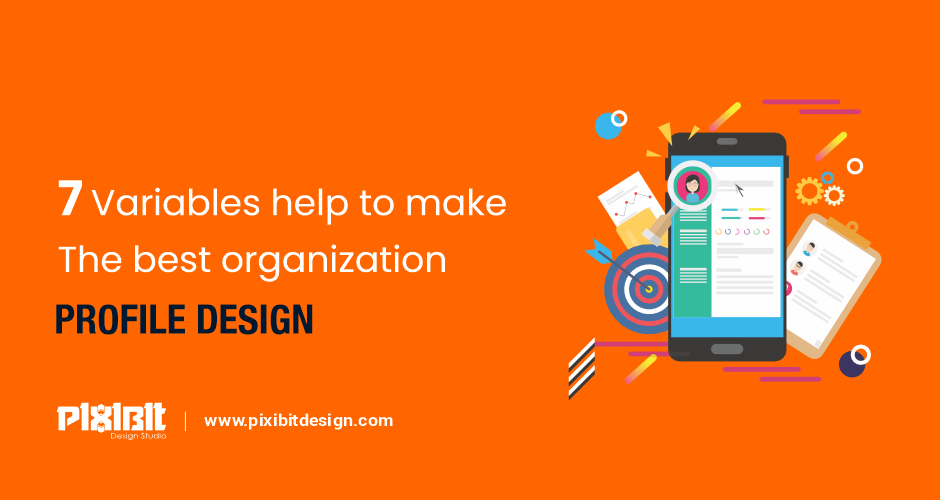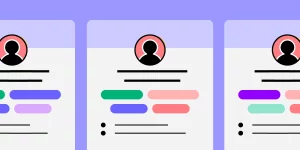

What is Organization Profile Design?
In today’s highly competitive business landscape, where first impressions hold immense weight, a well-crafted and visual company profile design can be the audience’s attention.
An organization profile design is a document that provides information about the company and gives a brief introduction. In profile design companies mission and vision, history, testimonials, achievements, and products or services are included. Because customers and clients can understand the work of the organization, and which types of work they completed. Organization profile design visually represents a business or organization’s identity, values, and key information.
However, the organization profile design discover the overviews of the company, stakeholders, clients, investors, etc…It can be presented in various formats, including digital documents, printed brochures, presentations, or web pages. Profile design is a powerful marketing and communication tool, providing an in-depth overview of the organization’s identity, values, services, achievements, and unique selling points.
Why profile design is important in an Organization?
An organization’s profile design plays a vital role in shaping its brand identity and perception in the marketplace. Moreover, attractive profile design create brand recognition, making it easier for audiences to identify and recall the organization across various touchpoints.
Furthermore, an impactful designed profile can serve as a marketing tool, effectively communicating the organization’s unique value proposition, capabilities, and achievements. It provides a platform to highlight successful projects, testimonials, and industry expertise, solidifying the organization’s reputation and positioning it as a leader in its field. This can be particularly valuable when pursuing new business opportunities or attracting top talent.

Here, are the different variables that help to make the best organization profile design:
1. Target Audience
The target audience is a different type of group for individuals interested in understanding the company’s identity, offerings, and values. Further, they includes potential clients, investors, partners, stakeholders, employees, and the general public. Each target audience seeks specific information from the organization profile design. Potential clients are interested in learning about the company’s products or services, quality standards, and customer satisfaction. Investors seek insights into the company’s financial performance, growth prospects, and leadership team. Partners look for alignment in values, goals, and collaboration opportunities. Employees seek to understand the company culture, career opportunities, and benefits. Lastly, the general public may be interested in the company’s community involvement, sustainability efforts, and overall reputation.
2. Brand Identity
Brand identity showcases the company’s values, personality, and visual representation. It’s more than just a logo or colour scheme. A well-defined brand identity in organization profile design ensures consistency across all touchpoints, from digital platforms to printed materials, creating a connecting and memorable brand experience. Through carefully chosen typography, colour palettes, imagery, and messaging, brand identity design inspires specific emotions and associations, leaving a lasting impression on the audience. Ultimately, a strong brand identity in organization profile design sets the stage for successful brand positioning, differentiation, and recognition in the competitive marketplace.
3. Clarity and Conciseness
Clarity and conciseness are essential elements of effective organization profile design, ensuring that the message is communicated clearly and succinctly to the audience. By presenting information in a straightforward and easy-to-understand manner, organization profiles engage viewers and convey key details without overwhelming them. Through strategic content organization and prioritization, clarity is achieved by highlighting the most relevant and impactful information while eliminating unnecessary clutter. Conciseness, on the other hand, involves distilling complex concepts and lengthy descriptions into concise and absorbing and retaining information.
4. Content Structure
Content structure is a fundamental aspect of organization profile design, dictating how information is organized and presented to effectively communicate the company’s message. Typically, content structure involves dividing the profile into sections are company overview, mission and vision, products or services, achievements, team members, and contact information. Each section is carefully crafted to provide a comprehensive overview of the organization, allowing the reader to get quick details. Moreover, content hierarchy and formatting techniques such as headings, bullet points, and whitespace are employed to enhance readability and highlight important information
5. Storytelling
Storytelling in organization profile design brings the brand’s narrative to the audience. Companies’ profiles are relatable to stakeholders and potential clients of the business. By incorporating storytelling into organization profile design, companies can effectively communicate their identity, build brand loyalty, and differentiate themselves in the competitive market landscape.
6. Include testimonials
Integrating testimonials into organization profile design adds a powerful element of credibility and social proof. Testimonials provide firsthand accounts of positive experiences from satisfied customers, clients, or partners, reinforcing the organization’s reliability and the value it delivers. When strategically placed throughout the profile, testimonials highlight specific strengths, achievements, and benefits of the organization’s products or services. Including testimonials in organization profile design not only enhances credibility but also helps to build trust and confidence in the market. By showcasing real-life success stories and endorsements, testimonials contribute to a compelling narrative that responds to the audience. Ultimately strengthening the organization’s brand reputation and fostering greater engagement and conversion.
7. Call to Action
In organization profile design, a compelling call to action (CTA) encourages the audience to take the next steps in engaging with the company. Whether it’s visiting the website, contacting the company for more information, or exploring its products or services, a well-crafted CTA prompts the reader to act. The placement and wording of the CTA are strategically chosen to draw attention and guide the reader toward desired actions. By incorporating clear and persuasive language, such as “Contact us today,” “Learn more,” or “Get started,” the CTA motivates the audience to move forward in their interaction with the company. Additionally, effective CTAs often include clickable buttons or hyperlinks to facilitate easy access to the desired destination.
Conclusion
Profile design considers the different variables to make place in market. By carefully addressing each variable, organizations can ensure that their profile effectively communicates their brand message, engages their target audience, and drives meaningful interactions and conversions. Ultimately, a well-designed organization profile enhances brand credibility and contributes to the overall success of the company in the competitive marketplace.
Pixibit Design can make a profile design for your organization.
